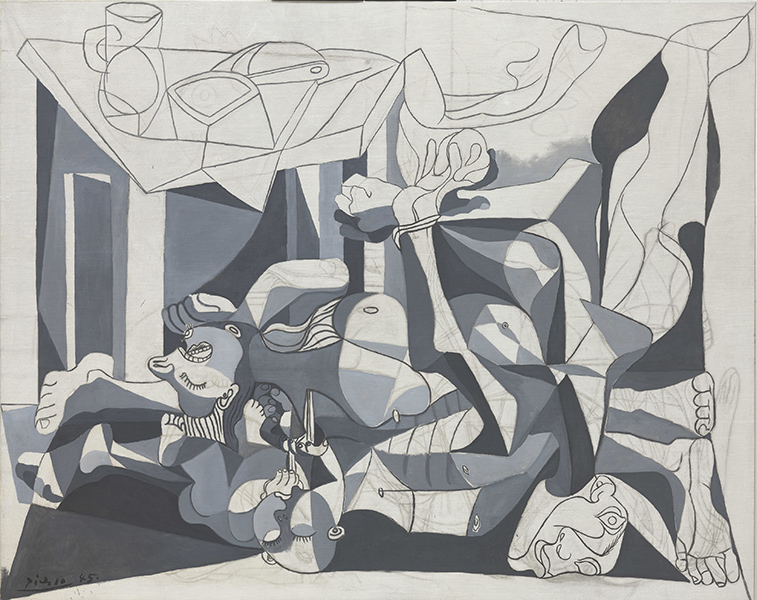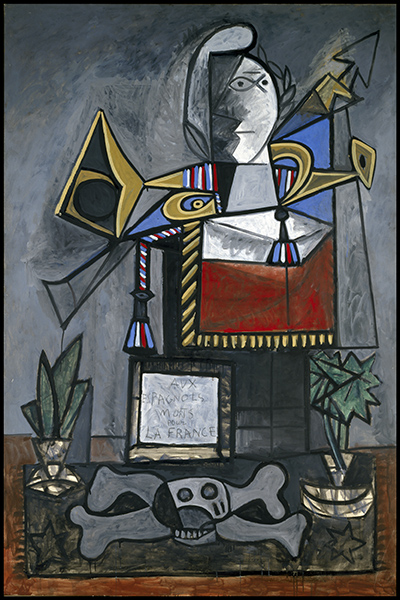"Painting is an offensive and defensive instrument of war against the enemy,”
After his victory, Franco turned Spain into an authoritarian state, repressing all forms of opposition with mass imprisonments; executions continued for many years. In 1945, after the Allied victory, the general was isolated and banished from the democratic world. Nevertheless, relations between the two countries were re-established after the 1950s, and in the 1960s, Spain experienced a period of economic growth, particularly due to tourism. In France, migrant workers arrived, including economic immigrants who had abandoned their homeland for ideological reasons.
Picasso, who stated that “painting is not made to decorate apartments; it is an offensive and defensive instrument of war against the enemy,”[1] presented the unfinished painting The Charnel House in 1946 at the group exhibition Art et Résistance at the Musée National d’Art Moderne in Paris. Organized by the association of supporters of the French Francs-Tireurs et Partisans (the Communist members of the Resistance), the show remained open from February 15 through March 15. At the last moment, Picasso added another piece on the same theme, Monument to the Spaniards Who Died for France (Museo Reina Sofía, Madrid, donated by the French Government in 1990). Through the movement and composition of a landscape whose misery had invaded the canvas, Picasso aimed to not let us forget the foreigners who contributed to the Allied victory by joining the underground to fight Nazi Germany. He wanted us to remember how the Spanish Republic was abandoned during the civil war – even by the Popular Front, which signed the famous “non-intervention” policy on Léon Blum's initiative. Picasso wished to remind the public of the involvement of many Spanish nationals in the Resistance and in the armies of free France. The threat of oblivion inspired his work – the fear that collective memory would fade. He felt the urgency of bearing witness in order to write down this page of history definitively in his painting.
The Charnel House (painted between 1944 and 1946 and held at the Museum of Modern Art in New York), confronting the artist’s particular world with the images of the massacres committed right after the war, depicts the horrors of fascism, uniting Franco and Hitler in the same bloodthirsty madness. The artist staged the agony of the population and the crimes of the civil war. He became the spokesman for the victims of fascism and undoubtedly hoped that his work would contribute towards keeping these memories alive among future generations. To Picasso’s dismay, the piece was largely misunderstood by the public – because understanding his paintings at that time meant decoding not only their subjects, but also the intertwining of allusions as well as the sometimes enigmatic underlying references, which the public did not appear to perceive.
[1] Picasso in Christian Zervos, 1935.






 Summary
Summary